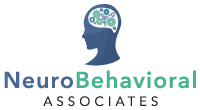Parents wish for their child to get the most out of their education, to excel at what they enjoy, give their best effort to what they find challenging and to discover their own success. Knowing the best route for doing so can be a daunting decision for any parent, especially for those of students with special needs. That is where IEPs and 504 plans come into action.
Both IEPs and 504 plans are blueprints for a student’s success. Just like building a home, a blueprint helps outline and define what a team is working towards. To know which blueprint is best for a particular student, it is helpful to understand the core components of each plan and how they differ from one another.
IEP vs. 504 Plan
In broad terms, IEPs and 504 plans differ in the fine lines of the laws that created each separate plan and the documents that define them. 504 plans were a result of section 504 of the Rehabilitation Act of 1973. Which, was enacted to ensure free and appropriate education for students with special needs. IEPs, Individualized Education Plans, were created as part of the IDEA (Individuals with Disabilities Education Improvement Act) which, unlike the 504 Civil Rights Act, has a specific list of what qualifies a student for the special education program.
Qualifications for an IEP
There are 13 specific disability categories, outlined by the IDEA, under which students may qualify for the special education program. A student may have one or more of the following disabilities: Traumatic brain injury, intellectual disability, orthopedic impairment, deafness, deaf-blindness, hearing impairment, visual impairment, speech or language impairment, emotional disturbance, autism spectrum disorder, specific learning disability (affects child’s ability to read write, listen, speak, reason or do math), other health impairment (impairment to child’s strength, energy, or alertness such as ADHD), or multiple disabilities.
If a child’s disability is included in the 13 listed, they may qualify for the IDEA special education program. However, the second step in determining a student’s qualification is by assessing the severity of the disability. To qualify for Special Education and an IEP, the IDEA states that the disability must “adversely affect” the student’s ability to learn adequately in the General Education Classroom.
How a student is determined eligible for an IEP
If a parent, or anyone who works with a student, feels the student may benefit from special education serves, they can request that the school perform an educational evaluation. With a parent’s consent, a team of professionals will perform the evaluation and determine a student’s eligibility for special education. If a student qualifies for special education, an IEP will be developed.
It is important to note, a student could have a qualifying disability, but the assessment team can still decide that an IEP is not the best fit for the student. For example, a child can have ADHD, which is under IDEA as Other Health Impairment, but the student may have a 504 instead of an IEP. However, a student can not have both an IEP and a 504 plan.
What does a 504 plan do?
A 504 plan is used to assist a student in most appropriately accessing the general education curriculum. The main focus of a 504 plan is to outline the specific supports determined to be appropriate for the student, as well as, who will be providing those supports. The goal of any 504 plan is to make sure that a student is not denied the opportunity to participate in, or benefit from, any Federal funded activity.
In contrast to an IEP, a 504 plan is more flexible and less stringent. The 504 plan team requires fewer members than an IEP team and does not necessarily include as much written information as is seen on an IEP.
How a student is determined eligible for a 504 plan
In the same way as an IEP, anyone who notices that a student may benefit from a 504 plan can request an assessment. Section 504 defines a qualifying disability as “any person who: (i) has a physical or mental impairment which substantially limits one or more major life activities, (ii) has a record of such an impairment, or (iii) is regarded as having such an impairment.” If a student’s disability is determined to be eligible, a 504 plan is created.
References
- Difference Between A Section 504 Plan And An IEP. (n.d.). Retrieved April 25, 2018, from https://www.education.nh.gov/instruction/school_health/faq_504.htm
- Free Appropriate Public Education under Section 504. (n.d.). Retrieved April 25, 2018, from https://www2.ed.gov/about/offices/list/ocr/docs/edlite-FAPE504.html
- Team, U. (n.d.). The Difference Between IEPs and 504 Plans. Retrieved April 25, 2018, from https://www.understood.org/en/school-learning/special-services/504-plan/the-difference-between-ieps-and-504-plans






